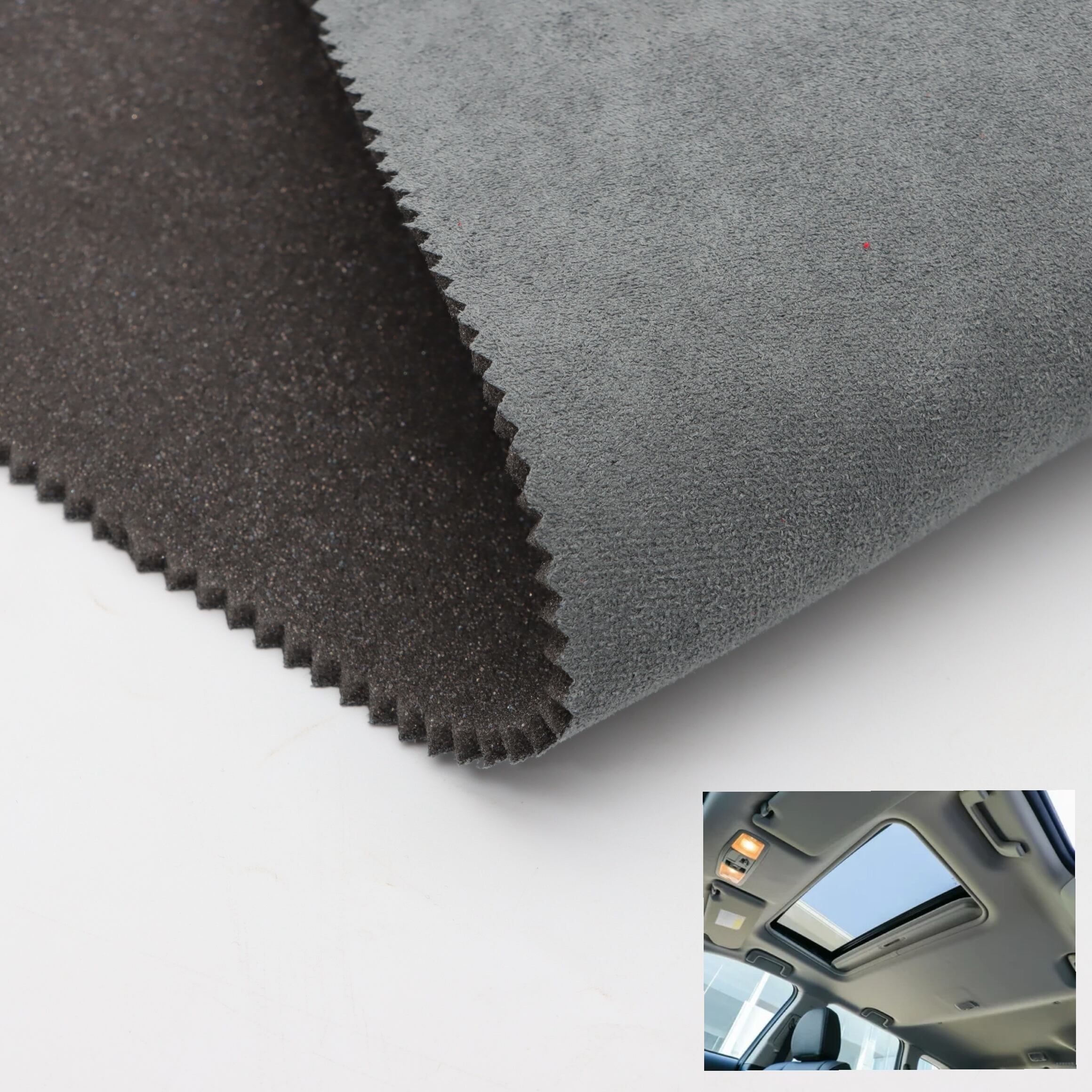What Types of Foam Fabric Are Best for Medical Belts and Wraps
Medical belts and wraps play a critical role in providing support, stabilization, and comfort for patients recovering from injuries or managing chronic conditions. The effectiveness of these devices largely depends on the materials used in their construction. Foam fabric has emerged as a leading material for medical belts and wraps due to its unique combination of cushioning, flexibility, and durability. This guide explores the types of foam fabric suitable for medical applications, their benefits, applications, and future innovations.
Understanding Foam Fabric in Medical Applications
Foam fabric is a composite material that combines a soft textile layer with a foam core. The textile surface can be woven, knitted, or non-woven and often includes moisture-wicking properties to improve comfort. The foam layer provides cushioning, resilience, and structural support. In medical belts and wraps, the choice of foam fabric is crucial because it affects patient comfort, support effectiveness, and long-term usability.
The combination of textile and foam ensures that the device conforms to the body while maintaining stability, allowing patients to move naturally while reducing strain on injured areas. Foam fabric also absorbs impact and minimizes pressure points, which is particularly important for individuals with sensitive skin or extended wear requirements.
Key Properties to Consider
When selecting foam fabric for medical belts and wraps, several properties must be evaluated:
Comfort is essential to encourage consistent use. The material should be soft against the skin and flexible enough to accommodate body movements.
Breathability allows air circulation and reduces moisture accumulation, preventing skin irritation and odor.
Durability ensures the belt or wrap maintains its shape and performance even after repeated use and cleaning.
Hypoallergenic and skin-friendly characteristics reduce the risk of rashes, allergic reactions, or discomfort during prolonged wear.
Flexibility and support balance is critical. The fabric should offer sufficient stabilization while allowing controlled movement of joints and muscles.
Types of Foam Fabric for Medical Belts and Wraps
Neoprene Foam Fabric
Neoprene is a synthetic rubber widely used in medical support devices. Its foam version offers excellent cushioning, elasticity, and insulation. Neoprene foam fabric is ideal for medical belts and wraps because it provides firm support without restricting movement. It is also resistant to moisture and temperature changes, making it suitable for sports rehabilitation and chronic condition management.
Neoprene foam can be combined with different textile surfaces to enhance breathability and reduce skin irritation. Medical-grade neoprene is typically hypoallergenic and free from harmful chemicals, making it safe for direct skin contact.
Polyurethane Foam Fabric
Polyurethane (PU) foam fabric is another popular choice for medical applications. It is lightweight, flexible, and highly resilient, which allows for repeated stretching and compression without losing shape. PU foam fabric offers excellent cushioning and conforms to body contours, providing comfort while supporting the injured area.
PU foam fabrics can be laminated with breathable textiles or perforated for enhanced air circulation. They are often used in lumbar belts, wrist supports, and knee wraps where prolonged wear and flexibility are required.
EVA Foam Fabric
Ethylene-vinyl acetate (EVA) foam fabric is lightweight and shock-absorbent, making it suitable for medical belts and wraps intended for rehabilitation and post-operative support. EVA foam fabric provides firm yet flexible support, allowing controlled movement and protecting sensitive areas from impact.
EVA foam can be coated with soft textiles to improve comfort and prevent skin irritation. Its durability and water-resistant properties make it easy to clean and maintain, extending the life of the medical device.
Memory Foam Fabric
Memory foam fabric is designed to mold to the shape of the body, offering a customized fit and enhanced comfort. This type of foam fabric is especially beneficial for patients who require prolonged support, such as those with chronic back pain or post-surgical recovery needs.
The viscoelastic properties of memory foam reduce pressure points, improve weight distribution, and enhance circulation. Memory foam is typically combined with breathable textiles to prevent heat buildup and moisture accumulation during extended use.
Laminated Foam Fabrics
Laminated foam fabrics combine multiple layers of foam with textile surfaces to achieve a balance of cushioning, support, and durability. These fabrics can be customized with different densities in specific zones, providing firmer support where needed while maintaining flexibility in other areas.
Laminated foam fabrics are commonly used in braces and wraps that target multiple joint areas, such as shoulder belts or combined lumbar-thoracic supports. The layered construction allows manufacturers to create medical devices that meet specific therapeutic requirements.
Applications of Foam Fabric in Medical Belts and Wraps
Lumbar and Back Supports
Foam fabric is commonly used in lumbar belts to provide support, improve posture, and reduce strain on lower back muscles. Neoprene or PU foam fabrics are ideal for lumbar supports because they combine firm stabilization with comfort and breathability.

Knee Braces and Wraps
Medical knee supports benefit from EVA or neoprene foam fabrics due to their flexibility and shock-absorbing properties. These fabrics provide compression, reduce swelling, and allow controlled bending of the joint during rehabilitation.
Wrist and Elbow Supports
Wrist and elbow braces often use memory foam or laminated foam fabrics. These materials conform to the joint, providing a snug fit while protecting against impact and reducing strain during movement.
Shoulder and Thoracic Supports
Shoulder wraps and thoracic belts utilize laminated foam fabrics that provide targeted support while allowing mobility. Foam fabrics can be engineered with varying thicknesses and densities to stabilize the shoulder and upper back without restricting arm movement.
Post-Surgical and Orthopedic Recovery
Medical belts and wraps designed for post-surgical recovery often employ memory foam or PU foam fabrics. These materials offer gentle compression, reduce swelling, and enhance comfort during the healing process.
Benefits of Using Foam Fabric in Medical Devices
Comfort is a primary benefit, ensuring patients can wear belts and wraps for extended periods without irritation.
Lightweight construction minimizes fatigue and makes the device easier to wear throughout daily activities.
Flexibility allows controlled movement while providing adequate support to the affected area.
Durability ensures the device maintains its structural integrity even after repeated stretching and cleaning.
Moisture-wicking and breathable properties prevent skin irritation and improve overall patient satisfaction.
Customizability allows manufacturers to create devices tailored to specific therapeutic needs, joint areas, and patient sizes.
Future Innovations in Foam Fabric for Medical Belts and Wraps
As technology evolves, foam fabric for medical applications continues to advance. Manufacturers are developing antimicrobial coatings that prevent bacterial growth, reducing the risk of infection. Eco-friendly and recyclable foam fabrics are becoming more prevalent, contributing to sustainability in healthcare products.
Smart medical belts and wraps may integrate sensors into foam fabrics, allowing real-time monitoring of joint movement, pressure, and patient adherence to therapy. Advanced laminates with varying foam densities offer improved therapeutic benefits while maintaining comfort and mobility.
Conclusion
Foam fabric is an essential material for medical belts and wraps due to its unique combination of comfort, flexibility, durability, and support. From neoprene and PU foam to memory foam and laminated constructions, each type of foam fabric serves specific applications in rehabilitation, injury prevention, and post-surgical care. Understanding the properties, applications, and benefits of foam fabrics allows healthcare providers, manufacturers, and patients to make informed decisions that improve comfort, compliance, and therapeutic outcomes.
FAQ
What types of foam fabric are commonly used in medical belts and wraps?
Neoprene, polyurethane (PU), EVA, memory foam, and laminated foam fabrics are all widely used in medical applications.
Why is foam fabric preferred over other materials?
Foam fabric provides cushioning, flexibility, durability, and skin-friendly properties, making it more comfortable and effective for prolonged wear.
Can foam fabric prevent skin irritation during extended use?
Yes, breathable and hypoallergenic foam fabrics reduce friction and moisture buildup, preventing rashes and irritation.
Are foam fabrics suitable for post-surgical supports?
Absolutely, memory foam and PU foam fabrics offer gentle compression and comfort, which are ideal for post-operative recovery.
Can foam fabric be customized for different joint areas?
Yes, laminated and zoned foam fabrics allow manufacturers to vary density and thickness to provide targeted support for knees, shoulders, wrists, and other joints.
Table of Contents
- What Types of Foam Fabric Are Best for Medical Belts and Wraps
- Understanding Foam Fabric in Medical Applications
- Key Properties to Consider
- Types of Foam Fabric for Medical Belts and Wraps
- Applications of Foam Fabric in Medical Belts and Wraps
- Benefits of Using Foam Fabric in Medical Devices
- Future Innovations in Foam Fabric for Medical Belts and Wraps
- Conclusion
- FAQ







